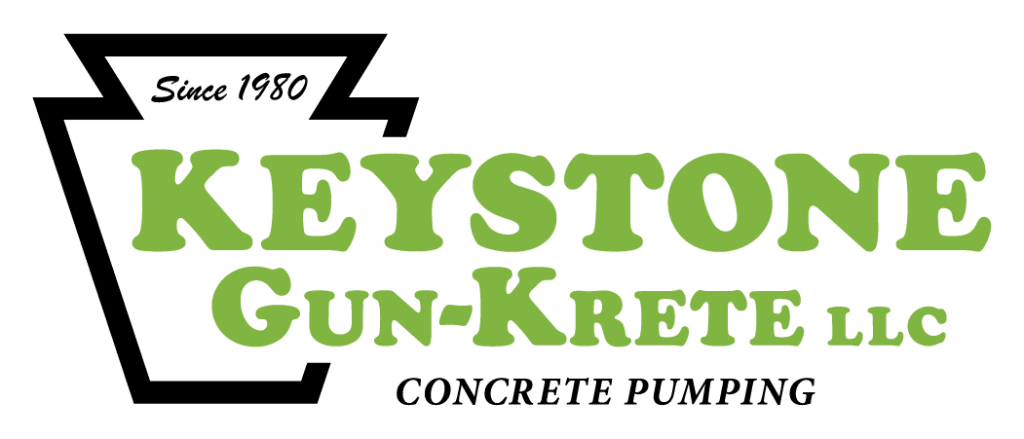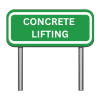Your Concrete Lifting Questions Answered
Have you ever looked at your concrete driveway or patio and thought, "Man, this thing is sinking!" It's a common problem, and it can be both unsightly and dangerous. That's where concrete lifting comes in.
We’re grateful to have a team of experts in restoring sunken concrete surfaces here at Keystone Gun-Krete. In our previous blog post, "Concrete Lifting 101: A Guide to Restoring Your Concrete," we provided a basic overview of the process. But in this post, we're diving deeper to answer some of the most frequently asked questions about concrete lifting.
Concrete lifting is a cost-effective and efficient way to repair sunken concrete without having to replace it entirely. It's a great alternative to traditional methods because it's less disruptive, faster, and often more environmentally friendly.
But you probably have questions, am I right? Then let's dive into answering them!
Signs You Need Concrete Lifting
One of the most common signs that you need concrete lifting is uneven surfaces. This can manifest in a variety of ways, such as tripping hazards, pooling water, or gaps between the concrete and the foundation.
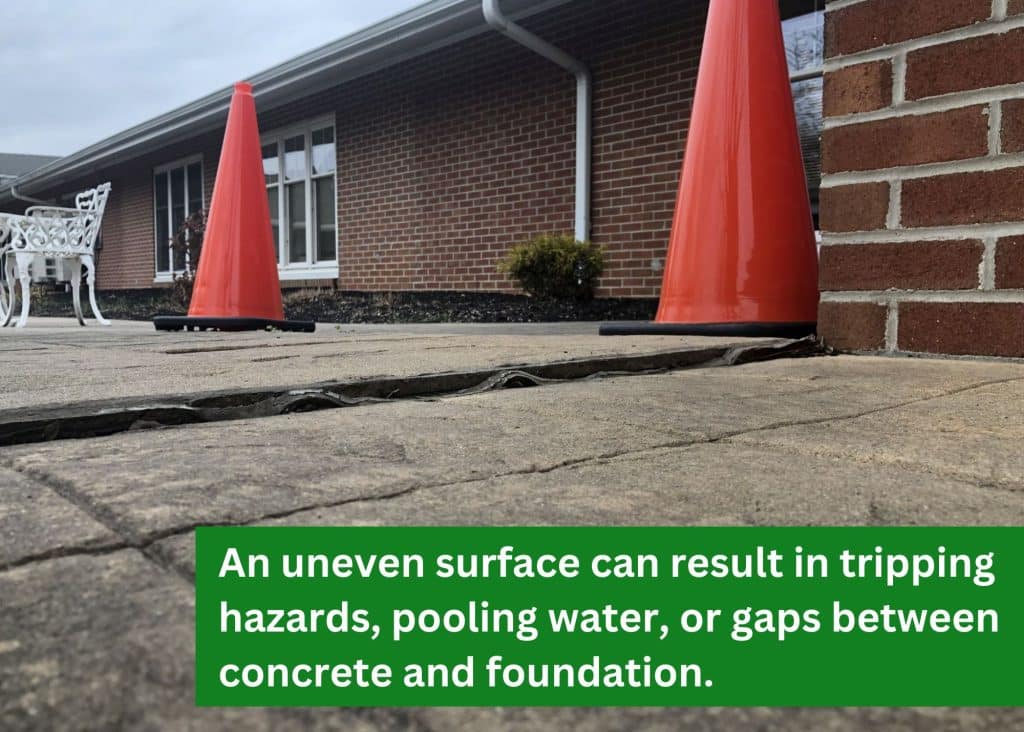
Additionally, cracks in concrete slabs or drainage issues can also indicate that your concrete needs to be lifted.
What Is Concrete Lifting?
Concrete lifting, also known as slab jacking or polyjacking, is a process that involves injecting high-density polyurethane foam beneath sunken concrete slabs. This foam expands and lifts the concrete back to its original level.
Now that you're familiar with what concrete lifting is, let's look at questions about its benefits.
Benefits of Concrete Lifting
Concrete lifting offers several advantages over traditional methods like concrete replacement. For starters, it's typically more cost-effective. It also has a much faster turnaround time, meaning you can use your driveway or patio again sooner. Additionally, concrete lifting causes minimal disruption to your property and surrounding areas.
The results of concrete lifting are long-lasting, and the process is also environmentally friendly. By lifting existing concrete instead of replacing it, you're reducing the amount of materials and energy needed for construction.
What Materials Are Used in Concrete Lifting?
The primary material used in concrete lifting is high-density polyurethane foam. This foam is injected beneath the sunken concrete and expands to fill the voids. It's lightweight, cures quickly, and is highly durable. Future ground moisture will not break down the polyurethane foam, so the solution is considered permanent. In fact, UV from sunlight is the only thing that can deteriorate the foam which should never be present below your concrete slab.
What Are the Disadvantages of Lifting a Slab?
Concrete lifting, while a popular method, does have some potential disadvantages. One of the main drawbacks is the material cost itself. If the slab has sunken excessively (more than several inches) or has significant void below, the cost of lifting versus replacement might not make lifting the most cost effective solution. Additionally, there's a risk of misalignment or unevenness or even cracking during the lifting process, which can require additional adjustments or repairs. This is where experience is everything, and hiring professionals with experience makes all of the difference!
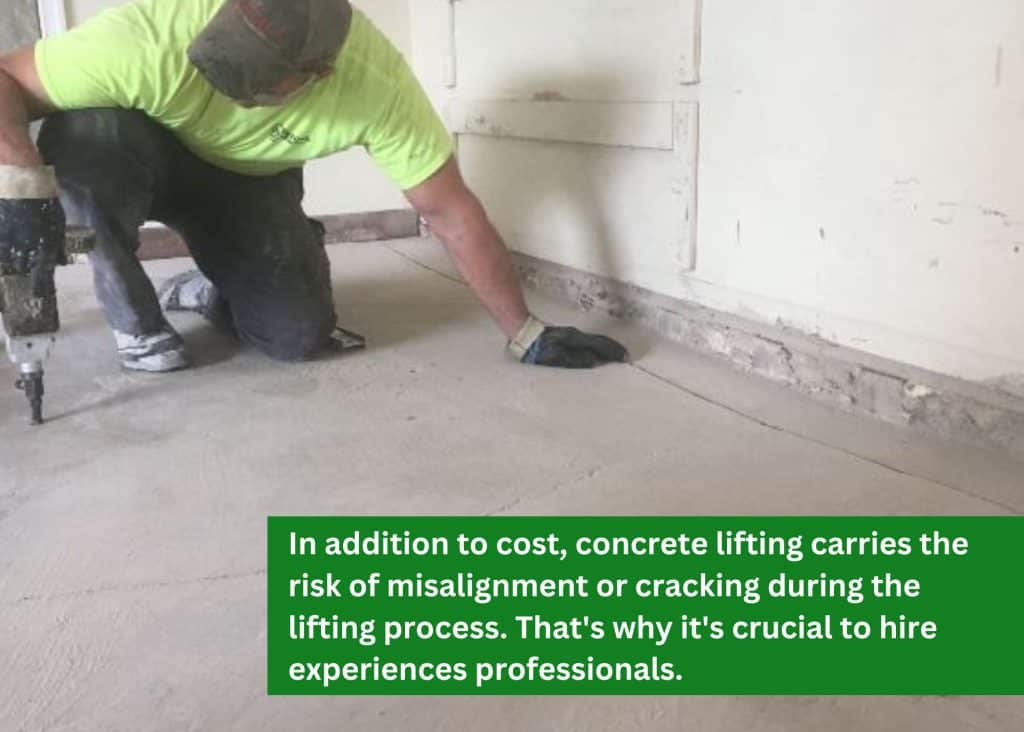
Is Concrete Lifting a Good Idea?
In the end, concrete lifting is often a great option for repairing sunken concrete surfaces. It's a cost-effective, efficient, and minimally disruptive solution compared to traditional methods like concrete replacement. However, it's essential to assess the specific condition of your concrete and consult with a professional to determine if concrete lifting is the best approach for your situation.
Hopefully, by now, you're buying into the value of concrete lifting. But you may be wondering about the process. Let's look at that next.
The Concrete Lifting Process
The concrete lifting process typically involves several steps. First, our experts will inspect and evaluate the condition of your concrete. They will then drill small (typically ⅜”) holes in the concrete and inject the polyurethane foam. The foam will expand and lift the concrete back into place. Once they’ve completed the lifting process, they will seal the injection holes with grout.
It's important to note that concrete lifting requires expertise to be done correctly. Because of our team’s years of experience and knowledge, Keystone Gun-Krete customers have come to enjoy seeing their projects completed efficiently and effectively.
How Long Does Concrete Lifting Take?
The time required for concrete lifting varies depending on the size and complexity of the project. However, in most cases, the process can be completed within a few hours.
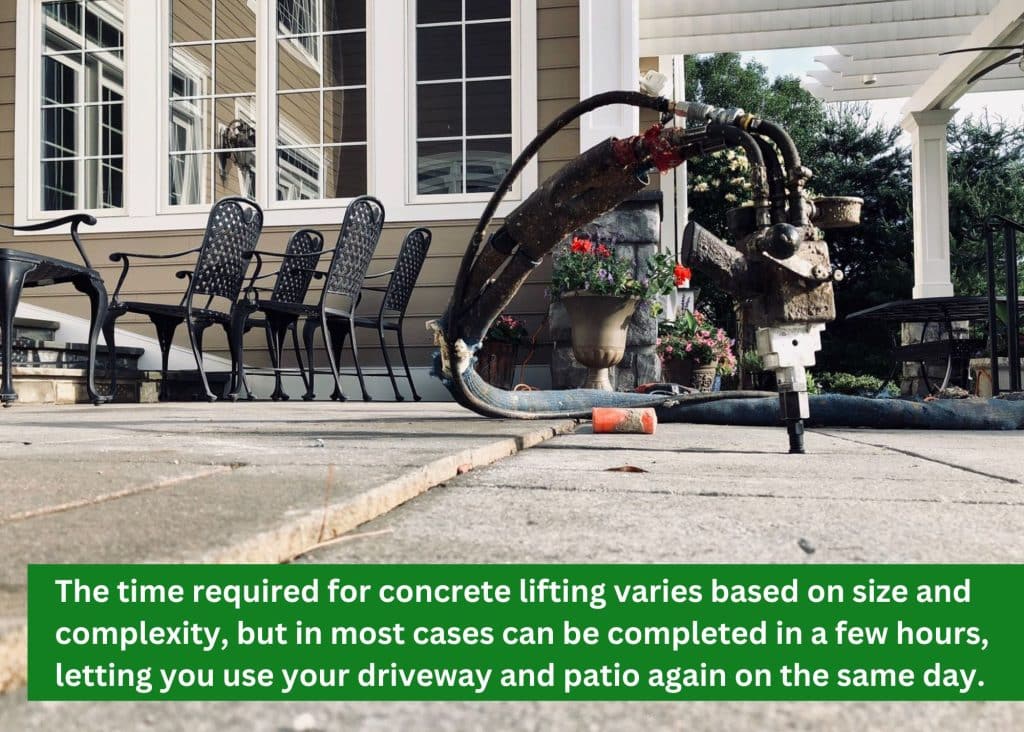
This means you can often use your driveway or patio again on the same day.
How Much Does Concrete Lifting Cost?
The cost of concrete lifting will depend on several factors, including the amount of polyurethane foam required, the size of the area to be lifted, the condition of the concrete, and any additional services required. However, we offer free estimates so you can get a precise quote for your project.
Is Concrete Lifting a DIY Project?
We strongly discourage attempting concrete lifting as a DIY project. The process requires specialized equipment and materials, and it's essential to have the proper injection technique to ensure successful results. Additionally, there are safety hazards involved, and it's best to leave this task to professionals.
What Types of Concrete Can Be Lifted?
Concrete lifting can be used to repair a variety of concrete surfaces, including driveways, sidewalks, patios, walkways, pool decks, and more.
How Long Does Lifted Concrete Last?
When done correctly, concrete lifting can last for decades. The polyurethane foam used in the process is highly durable and can withstand the elements.
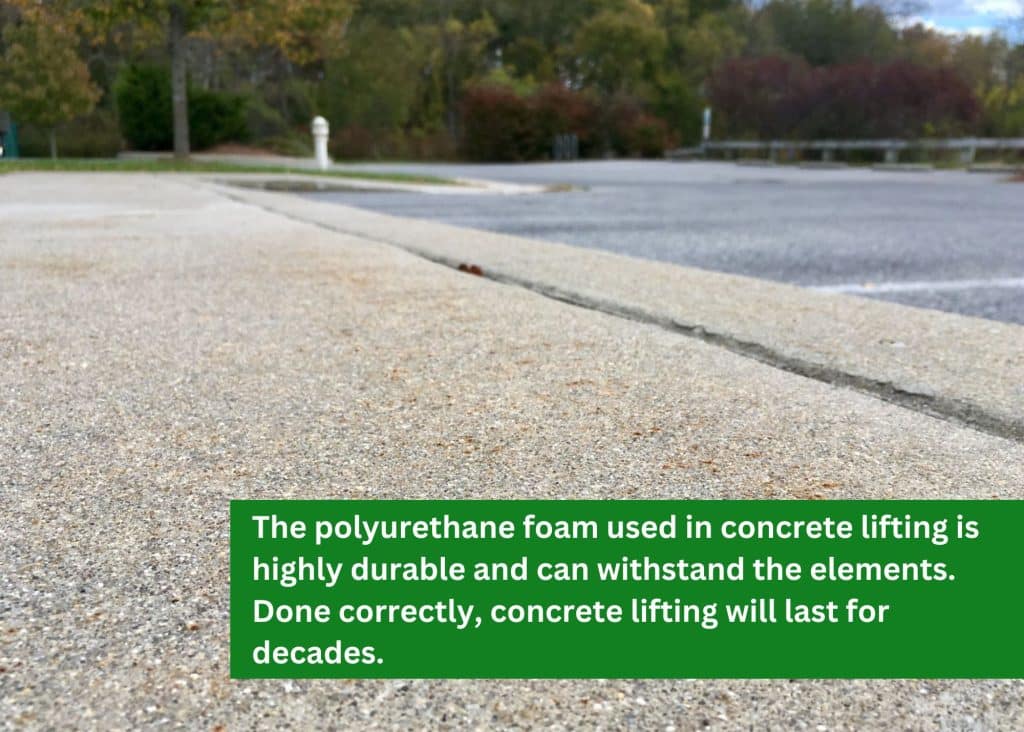
However, it's important to address any underlying causes of settling to ensure long-term results.
What Happens After Concrete Lifting?
After the concrete lifting process is complete, there is typically a short curing time for the polyurethane foam. Once cured, the concrete will be stable and require minimal maintenance.
Bonus: Debunking Common Myths About Concrete Lifting
Before we conclude, there are a few common misconceptions about concrete lifting that we want to address.
Myth 1: Concrete lifting is a temporary solution.
This is simply not true. The polyurethane foam used in concrete lifting is highly durable and can last for decades. It provides a long-term solution to sunken concrete.
Myth 2: Concrete lifting weakens the concrete.
In fact, the opposite is true. Concrete lifting helps to stabilize the concrete and prevent further deterioration. Filling voids beneath the concrete strengthens the slab and prevents future settling.
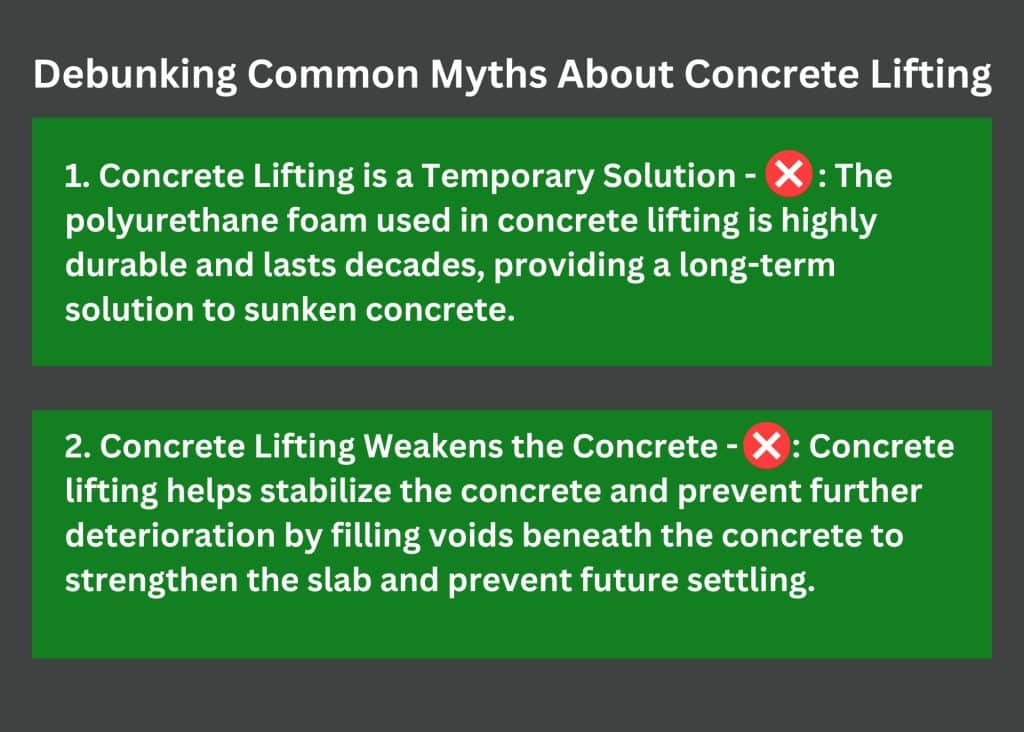
Get Your Concrete Level Again with Keystone Gun-Krete
There you have it. Concrete lifting is a reliable and efficient way to repair sunken concrete surfaces. It's a cost-effective alternative to replacement, and it offers long-lasting results.
If you're dealing with uneven concrete, cracks, or drainage issues, don't hesitate to contact us at Keystone Gun-Krete. Our experts can provide a free consultation and estimate to determine if concrete lifting is the right solution for your needs.
Visit our website to learn more or schedule a consultation. You can also check out our latest blog posts here.

